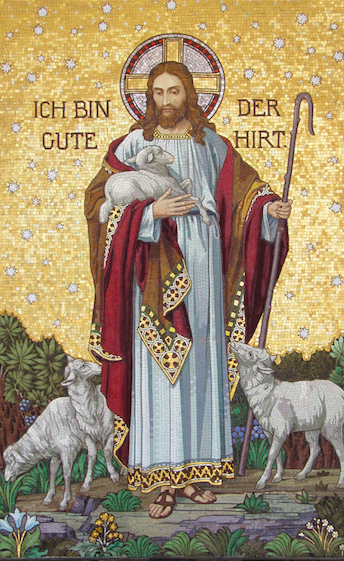
Jesus the Good Shepherd
By Fr. Peter Patros
If there is one image of Jesus that warms the heart of many, it would have to be
the image of Jesus as the Good Shepherd. William Barclay argues that “there is no
better loved picture of Jesus than the Good Shepherd.” Watching this carry, lead, and
protect these helpless sheep is a metaphor we could carry with us for days on end.
We have reached the Sixth Sunday of the Great Fast. The Gospel for this
Sunday reads from the tenth chapter of John where Jesus takes on this great role as he
claims, “I am the good shepherd” (Jn 10:14). Why does Jesus choose this imagery to
portray his relationship to God’s people? How can this image help us understand who
Jesus is for us.
Many people feel comfort when seeing Jesus as the Good Shepherd. They
generally feel a sense of protection. They see this image of Jesus carrying a lamb on
his shoulders. It is helpful to ask why. It wasn’t because this lamb got luxurious
treatment that they got a piggy-back ride from Christ. Sheep are very helpless animals.
When they are separated from the rest of the flock, they really have nothing to defend
themselves against predators. They have no sharp teeth to defend, no claws to fight,
and no speed to be able to run away. A shepherd understands this very well and does
all he can to make sure that no sheep stray away from the flock. Separation is sure
death. Union with the Shepherd and with the flock means life.
So why is the shepherd carrying the lamb? We find our answer when we go back
to Psalm 23 where the Psalmist says, “Even though I walk through the valley of the
shadow of death, I fear no evil; for thou art with me; thy rod and thy staff, they comfort
me” (Ps 23:4). You may find this verse familiar from a rap song or even from your
cousin’s faded tattoo on his left shoulder. In this Psalm, the writer imagines himself as a
lamb being lead by God as the shepherd. His fear is dispersed and comfort is found in
the rod and staff of the shepherd. This rod was used to catch and pul back any sheep
that was moving astray. Before the returned back to the fold, the shepherd would hold
this rod at the entrance so that each sheep would have to pass under it. As they would
pass under, “the shepherd would quickly examine it to see if it had any kind of injury
throughout the day;” kind of like limbo. This rod was also used as discipline for the
sheep. The shepherd would sometimes use the rod to hit the leg of a sheep who kept
straying from the flock. The sheep would no longer be able to walk on their own, so the
shepherd would take this sheep upon his shoulders. A hurt leg of a sheep is better than
the death of the sheep. As mentioned before, separation meant death.
In our lives, when coming to understand ourselves as the sheep of Christ’s flock
it brings us great comfort. In the Church, when united to Christ the Good Shepherd and
united to the members of Christ’s body, our the fellow sheep of the flock, we are in
communion. In this communion, the communion of the Holy Spirit, we partake in this
Divine Life of the Trinity. However, when we stray away from Christ and the Church,
spiritual death awaits us. The enemy lies waiting as predator for our soul. We, like those
sheep, have nothing but the shepherd to protect, feed, and guide us. Sometimes this
protection and love comes in the form of disciplines. Just as the maybe the freedom of
walking was taken away from this lamb to protect his life, so too, we may sometimes
question why Christ closes the doors of some things we may want or desire. Christ, the
Good Shepherd, when we use our freedom to walk away and separate ourselves, may
take away our freedoms, carry us on His shoulders, that we may not taste the spiritual
death of sin. At this moment, we may recall the words of the psalmist as we are in
communion with Christ and the Church, “I fear no evil; for thou art with me; thy rod and
thy staff, they comfort me.”

